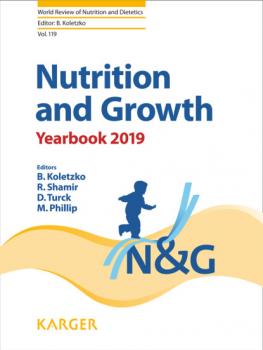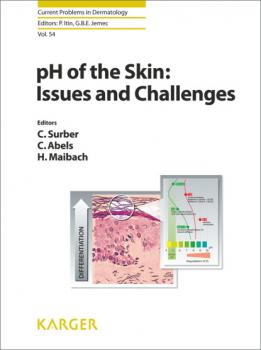Группа авторов
Список книг автора Группа авторовCKD-Associated Complications: Progress in the Last Half Century
This publication is a record of some of the outstanding presentations given at the 63rd Annual Meeting of the Japanese Society for Dialysis Therapy (JSDT). The meeting was held in Kobe in 2018, celebrating the 50-year anniversary of the founding of the JSDT as a voluntary academic association. Therapy for end-stage kidney disease (ESKD) now faces vital issues besides the management of renal anemia and chronic kidney disease-mineral and bone disorder and the selection of the optimal treatment modality for each patient. These issues include the increasing incidence of malnutrition and frailty in the elderly, fragile vascular access, and the balance between medical costs and budgets. Expert members of the JSDT present 15 articles that address these issues. This book serves to promote further progress in understanding the pathogenesis of complications associated with ESKD and providing optimal therapy for patients.
Human Milk: Composition, Clinical Benefits and Future Opportunities
Human milk contains all of the essential nutrients and other functional components thought to have short- and long-term neonatal health benefits, such as positive biological effects on growth, metabolism, cognition, and immunity. This publication brings together the world’s experts who touch on the spectrum of current knowledge, from the history and mechanics of breastfeeding, its physiological and clinical effects, to the new surprises revealed by metabolomics and comparative biology. One of the key points made is that human milk is not only a source of essential nutrients, but also contains a variety of bioactive substances. These include essential microbes, long-chain fatty acids, complex oligosaccharides, nucleotides, and bioactive signaling proteins and hormones. This book provides clinicians and researchers with useful insights from multiple perspectives on the various aspects of human milk and lactation.
Nurturing a Healthy Generation of Children: Research Gaps and Opportunities
Nutrition during infancy and childhood is the basis of an individual’s health in later life. It plays an important role in metabolic programming, physiological growth, and cognition. Diet and eating behavior can provide important insights as food choices and dietary habits go hand in hand with nutrition. This book highlights the importance of childhood diets, eating behaviors, and their potential impacts on development and health. The first part examines the development of taste in infants: It shows how taste preferences are shaped in utero and throughout weaning, and how they guide the individual’s later food choices. The second part focuses on what children really eat in different parts of the world. FITS (Feeding Infants and Toddlers Study) and KNHS (Kids Nutrition and Health Study) provide a glimpse into the diets of children around the world, identifying nutrition gaps and potential areas for intervention. The last part deals with breakfast and its significance as the most important meal of the day. The insights presented in this book provide valuable information for policy makers, researchers, and health care professionals.
Hypopharyngeal Cancer
In most published literature hypopharyngeal cancer is discussed in combination with larynx cancer. This volume is dedicated exclusively to hypopharyngeal cancer. It is a compilation by recognized head and neck oncology experts, who have extracted from published literature and from their own clinical practice, an up-to-date review and commentary on the management of hypopharyngeal cancer. All aspects of hypopharyngeal cancer have been reviewed. They include epidemiology, diagnosis, staging of disease, laser and robotic surgery, chemoradiotherapy, rehabilitation, options of treatment in health care restricted communities, supportive care, and future perspectives. The publication addresses head and neck clinicians and surgeons as well as radiologists, pathologists, medical and radiation-oncologists, and epidemiologists. Health care purchasers, supportive care clinicians, and general medical and dental practitioners will also benefit from this concise update.
Nutrition and Growth
Optimal nutrition is difficult to achieve. Insufficient energy and nutrient intake leads to inadequate growth, whereas too much can result in increased risk of non-communicable diseases (mainly obesity) and may adversely affect children with chronic diseases. Our understanding of the pathophysiology of inappropriate growth and the pathways involved in optimal and catch-up growth is constantly evolving. There is also new data emerging on the role of genes and the interaction between nutrition and epigenetic changes involved in growth, as well as on the interplay between nutrition and growth factors and hormones in health and disease states. In this latest yearbook, noted specialists present leading studies related to various aspects of nutrition and growth published between July 2017 and June 2018. Each study is summarized, with comments, providing additional and helpful views of interpretation. The book will provide useful and valuable information for health care providers, physicians, nurses, dieticians, scientists, and anyone else interested in nutrition.
Disorders of Fluid and Electrolyte Metabolism
It is well known that acute, severe hyponatremia is a life-threatening situation. However, there is growing evidence that mild and chronic hyponatremia may also have negative consequences. Gait disturbances, attention deficits, falls and fractures, and bone loss have all been reported, with increased mortality in almost every disease state if the patient is hyponatremic. This book has been written by key opinion leaders in the field and covers a spectrum of crucial aspects of hyponatremia, including a historical perspective, physiology and pathophysiology of water homeostasis, epidemiology of hyponatremia, and clinical features. A detailed description of all available therapies has been incorporated, with a guide to a clinician’s approach to key therapeutic situations. Hyponatremia is a topic that encompasses all areas of medicine, so this book will be of interest to specialists such as endocrinologists, nephrologists and internists, but will also be a valuable resource for all clinicians who manage patients with hyponatremia.
Vestibular Disorders
This collection of articles on the latest developments is written by experts in various sub-disciplines – medical and paramedical – of vestibular disorders. Contributions discuss various manifestations of vestibular disorders and how to diagnose and treat them. The different areas are put into context to support the clinician in the diagnosis and treatment of patients with dizziness, imbalance, and vertigo. New diagnostic tools are presented as are new approaches to the understanding of clinical signs and underlying pathologies. Otolaryngologists seeking to provide up-to-date assessment and care will find this publication a valuable and indispensable read. The contributions presented appeal not only to otolaryngologists of all levels of experience, but also to front-line clinical staff.
Parathyroid Disorders
This book is devoted exclusively to hyper- and hypoparathyroidism with a focus on clinical practice guidelines explained by experts in the field. The clinical, genetic, biochemical, and pharmacological aspects of the most common parathyroid conditions are discussed comprehensively. The 15 chapters review the various forms of hyperparathyroidism and hypoparathyroidism and present data derived from widely diverse sources. New therapeutic approaches for chronic hypoparathyroidism continue to pique interest in parathyroid diseases and show that more research must be done to optimize care. The aim of this book is to serve as a practical guide to clinical management of common parathyroid conditions and to disseminate knowledge useful to the clinic, both for specialists and general practitioners. Also, under- and postgraduates, specialist nurses, and non-experts in the field will find this book to be a valuable source of current information.
Neurological Disorders in Famous Artists - Part 4
In this fourth volume of the popular series 'Neurological Disorders in Famous Artists' we once again delve into the minds of writers, painters, and poets in order to gain better insight on how neurological and psychiatric diseases can influence creativity. The issue of schizophrenia, the interaction between psychological instability and drug abuse, and the intricate association between organic wounds and shell-shock disorders are illustrated with the examples of Franz Kafka, Raymond Roussel, and Louis-Ferdinand Céline and their writings. Dementia has been specifically studied before, including in the previous volumes of Neurological Disorders in Famous Artists. It is revisited here in order to present the striking and well-documented case of Willem de Kooning, which inspired a new approach. Apart from issues that sometimes border on neuropsychiatry, purer neurological cases such as post-amputation limb pain (Arthur Rimbaud) or tabetic ataxia (Edouard Manet) are presented as well. Other fascinating life trajectories associated with cerebral or psychological changes include those of the writers Bjornsen, Tolstoi, Turgeniev, Mann, Ibsen, and Pavese.









